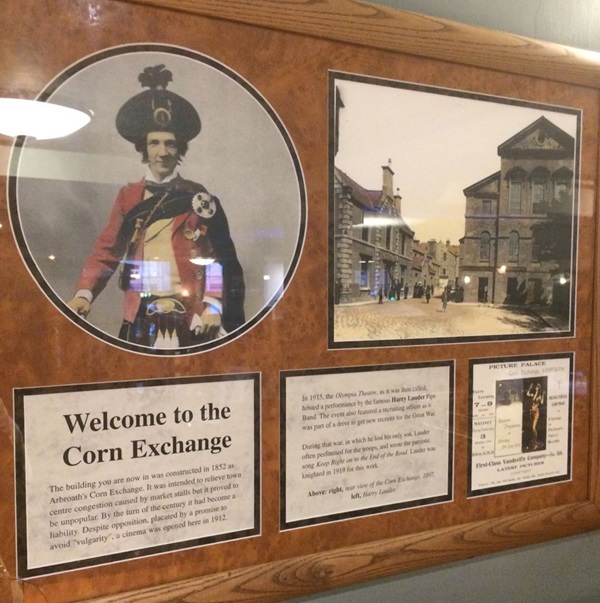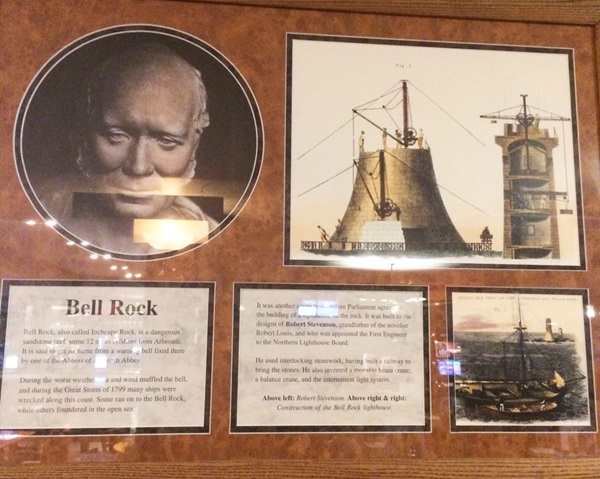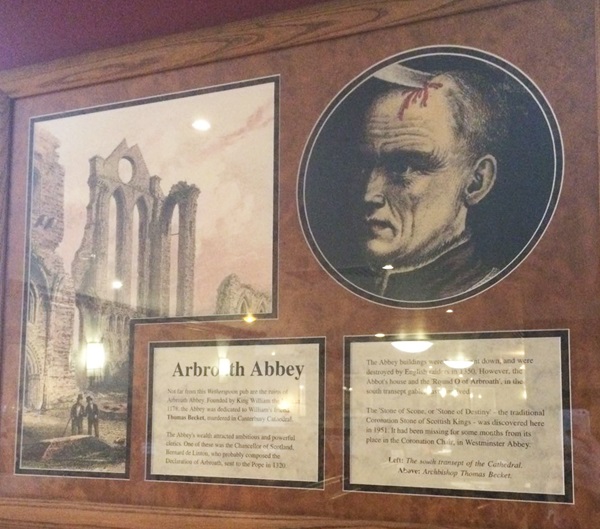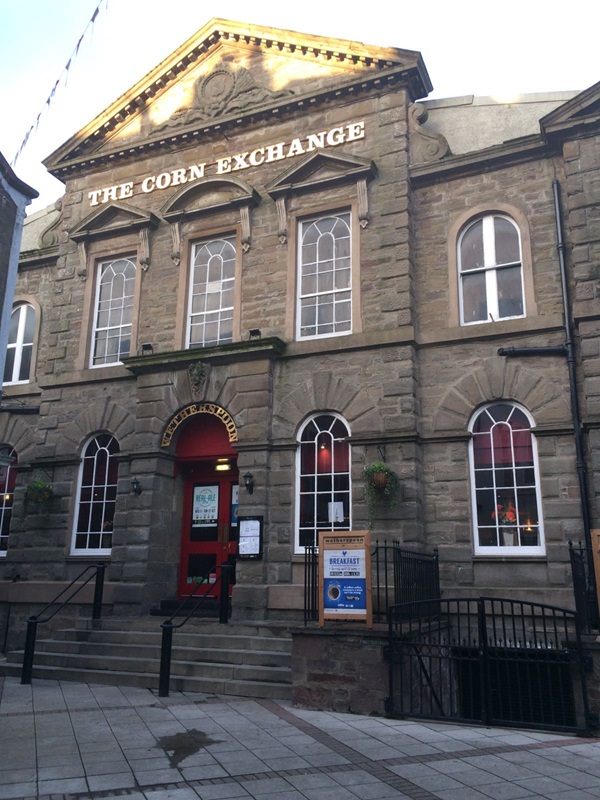Work started on building The Corn Exchange in 1852 and was completed two years later. Unfortunately, few stallholders used the new building and, for the next 50 years, it was used for auctions and other events. In 1912, the building was converted into the Olympia Picture Palace. It was formally opened by the provost on 8 July 1912 and is now this Wetherspoon pub, bearing its original name.
Prints and text about The Corn Exchange.

The text reads: The building that you are now in was constructed in 1852 as Arbroath’s Corn Exchange. It was intended to relieve town centre congestion caused by market stalls but it proved to be unpopular. By the turn of the century it had become a liability. Despite opposition, placated by a promise to avoid “vulgarity”, a cinema was opened here in 1912.
In 1915, the Olympia Theatre, as it was called then, hosted a performance by the famous Harry Lauder Pipe Band. The event also featured a recruiting officer as it was part of a drive to get new recruits for the Great War.
During that war, in which he lost his only son, Lauder often performed for the troops, and wrote the patriotic song Keep Right on to the End of the Road. Lauder was knighted in 1919 for this work.
Above: right, rear view of the Corn Exchange, 1897
Left: Harry Lauder.
Prints and text about Bell Rock.

The text reads: Bell Rock, also called Inchcape Rock, is a dangerous sandstone reef, some 12 miles offshore from Arbroath. It is said to get its name from a warning bell fixed there by one of the Abbots of Arbroath Abbey.
During the worst weather, sea and wind muffled the bell, and during the Great Storm of 1799 many ships were wrecked along this coast. Some ran on to the Bell Rock, while others foundered in the open sea.
The Abbey buildings were twice burnt down, and were destroyed by English raiders in 1350. However, the Abbot’s house and the Round O of Arbroath, in the south transept gable, have survived.
The Stone of Scone, or Stone of Destiny – the traditional Coronation Stone of Scottish Kings – was discovered here in 1951. It had been missing for some months from its place in the Coronation Chair, in Westminster Abbey.
Left: The south transept of the Cathedral
Above: Archbishop Thomas Becket.
Prints and text about Arbroath Abbey.

The text reads: Not far from this Wetherspoon pub are the remains of Arbroath Abbey. Founded by King William the Lion in 1178, the Abbey was dedicated to William’s friend Thomas Becket, murdered in Canterbury Cathedral.
The Abbey’s wealth attracted ambitious and powerful clerics. One of these was the Chancellor of Scotland, Bernard de Linton, who probably composed the Declaration of Arbroath, sent to the Pope in 1320.
It was another seven years before Parliament agreed to the building of a lighthouse on the rock. It was built to the designs of Robert Stevenson grandfather of the novelist Robert Louis, and who was appointed the First Engineer to the Northern Lighthouse Board.
He used interlocking stonework, having built a railway to bring the stones. He also invented a moveable beam crane; a balance crane, and the intermittent light system.
Above left: Robert Stevenson
Above right and right: Construction of the Bell Rock lighthouse.
External photograph of the building – main entrance.

If you have information on the history of this pub, then we’d like you to share it with us. Please e-mail all information to: pubhistories@jdwetherspoon.co.uk